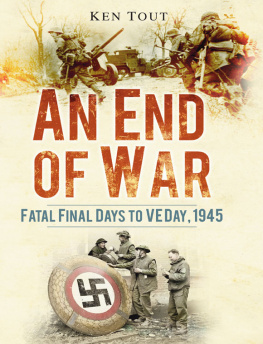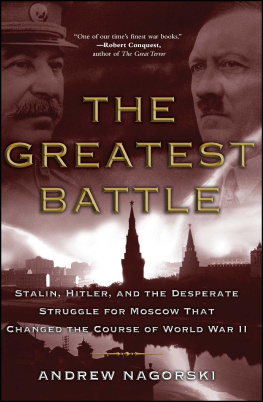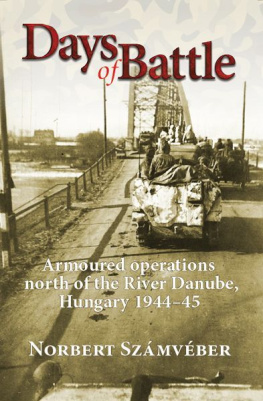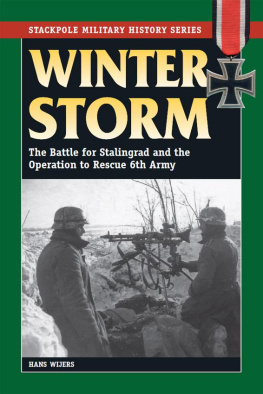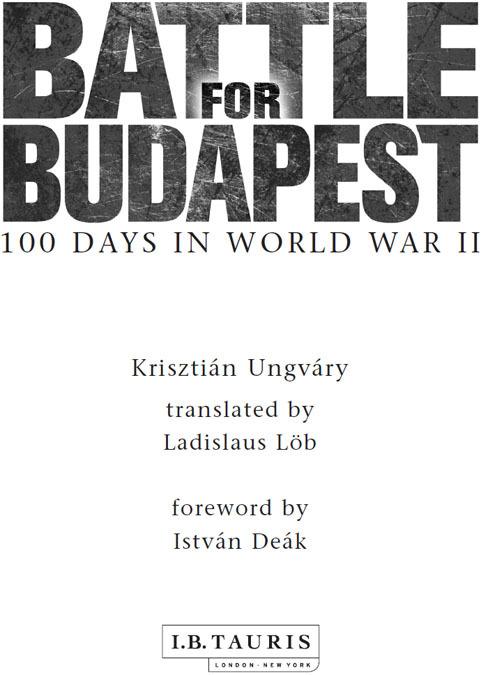New edition published in paperback in 2011 by I.B.Tauris & Co Ltd
6 Salem Road, London W2 4BU
175 Fifth Avenue, New York NY 10010
www.ibtauris.com
Distributed in the United States and Canada Exclusively by Palgrave Macmillan
175 Fifth Avenue, New York NY 10010
English language edition first published in hardback in 2003 by I.B.Tauris & Co Ltd
First published in German as Die Schlacht um Budapest 1944/45 1999
by F.A. Herbig Verlagsbuchhandlung GmbH, Munich
Original Hungarian edition: Budapest Ostroma (Corvina, Budapest, 1998)
Original text Krisztin Ungvry
Translated by Ladislaus Lb
Copyright I.B.Tauris, 2003, 2005, 2011
Foreword copyright Istvn Dek, 2011
All rights reserved. Except for brief quotations in a review, this book, or any part thereof, may not be reproduced, stored in or introduced into a retrieval system, or transmitted, in any form or by any means, electronic, mechanical, photocopying, recording or otherwise, without the prior written permission of the publisher.
ISBN 978 1 84885 973 9
eISBN 978 0 85773 013 8
A full CIP record for this book is available from the British Library
Typeset in Stone by Dexter Haven Associates Ltd, London
Contents
Illustrations
Maps
Map Legend
Foreword

Krisztin Ungvry rightly states in the Preface to his wonderful book that the battle for Budapest was one of the longest and bloodiest city battles of the Second World War, to which one might want to add that the battle for Budapest was also the longest and bloodiest siege of any country capital in Hitlers Europe. In the summer of 1944, the Germans surrendered Rome and Paris to the Allies, in part so as to avoid bloody revenge by the resistance movements. Brussels and the Hague, Copenhagen and Oslo saw virtually no fighting. In the early autumn of 1944 in Athens, the communist resisters took over much of the city even before the arrival of the British liberators, and soon Greek royalists, British soldiers and former Nazi collaborators combined forces to defeat the communists. Meanwhile, communist partisans took over Tirana and Sofia, while the Soviet Red Army, aided by partisans, chased the Germans out of Belgrade, much to the annoyance of Tito, who had wanted his troops to take the capital on their own. In the same period, the Romanian Royal Army drove the Germans out of Bucharest just before the arrival of the Soviet Red Army, while just a few kilometres east of Warsaw the Soviets waited patiently for the Germans to exterminate the Polish freedom fighters. Only later did the Soviets take the Polish capital, without any fighting. In the spring of 1945, Zagreb, Bratislava and Prague fell to the partisans and to the Soviet army with only a minimum of casualties.
It is true that during the last days of the war, SS troops, both Reich German and Austrian, defended Vienna for about a week, and that Berlin fell only after terrible bloodshed. Yet, of all the non-German capitals in Europe only Budapest became the victim of a titanic struggle: the SovietRomanian siege of the city began in November 1944; by Christmas Day, Budapest was completely encircled, and the last German and Hungarian troops perished on 1213 February 1945, in a failed attempt to break out from Fortress Budapest. Meanwhile, nearly a million inhabitants of the city, including a huge number of refugees, Hungarian military deserters in civilian clothing, and at least a hundred thousand Jews (one of the most substantial surviving Jewish communities in Hitlers Europe) sat in cellars waiting for the battle to end. Ungvry is right in saying that the siege of Leningrad not a country capital lasted much longer and claimed many more civilian victims than any other siege, but he also shows that the fighting for Leningrad took place outside the city and that most Leningraders died not because of combat in the streets but because of aerial bombing, artillery fire, starvation, disease and frostbite. The forty thousand civilian deaths in Budapest occurred, at least in part, through soldiers firing rifles and throwing hand grenades at each other in the capitals kitchens, bedrooms and bathrooms.
It is not as amazing as it would appear at first that, until Ungvry, no one had dared to write a comprehensive history of the battle for Budapest: such an undertaking requires fluency in at least Hungarian, German and Russian, which he possesses. This study also calls on his varied interests, ranging from grand politics and classical military history all the way to civilian life in the cellars, and suffering in the temporary hospitals without food, water and medicine, and sometimes without doctors.
Krisztin Ungvry, who is the son of one of Hungarys foremost liberal public intellectuals, has made a name for himself as an autonomous public intellectual, willing to criticise every aspect of his countrys present and past. He is also an internationally recognised expert on Hitlers war. In his other major work, on the Hungarian army in World War II, which so far exists only in Hungarian, he unhesitatingly discusses Hungarian atrocities committed in Ukraine as well as the tragic fate of the Hungarian Second Army at the front at the time of the Battle of Stalingrad and the sad lot of the Hungarian POWs in Soviet hands. Nor does Ungvry fail to point out that the devastating march of the Red Army across Hungary, in 194445, was no manifestation of Russian imperialism, as some in todays Hungary like to argue, but the inevitable consequence of Hungarys entirely unprovoked attack, in June 1941, on the Soviet Union.
The authors writing style is as fluent and elegant in Hungarian as that of the translator, Ladislaus Lbs, in English. The latter is a survivor not of the battle for Budapest or of the Jewish deportations but still of the Holocaust: he was, with his family, on the famous Kasztner train, which in 194445 took 1680 Hungarian Jews from Budapest through the concentration camp at Bergen-Belsen to Switzerland. Obviously, then, Lb has a strong commitment to the period, and he has done an excellent translation.
One of Ungvrys great merits is his ability to combine the unavoidably tiresome reporting on large-scale troop movements tiresome because these movements often represented wishful thinking on the part of generals in the chaos of war with the account of the doings of platoons, squads and even of individuals. He quotes abundantly from letters, diaries, memoirs and from long conversations with old civilians and soldiers. He might occasionally show more understanding for the original motivation and present excuses of these ancient warriors than some other historians would. After all, the assiduous defence of Budapest only delayed the inevitable collapse; holding out to the bitter end may have made some sense for the Germans and Austrians, who would rather have seen Budapest destroyed than Vienna, but all Hungarians could have and should have united at that time in concentrating on national survival.


